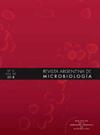茜草属植物抗蚜活性及抗氧化活性研究。
IF 2.1
4区 生物学
Q4 MICROBIOLOGY
引用次数: 0
摘要
由于由植物病原体Ascochyta rabiei引起的Ascochyta疫病,Cicer arietinum L.是一种重要的营养来源,每年遭受大量损失。摘要本研究旨在探讨山菖蒲和basilicum L.芽(叶和茎)对鼠疫病菌的抑菌作用。使用6种不同浓度的乙醇提取物进行体外生物测定:1%、1.5%、2%、2.5%、3%和3.5%。通过气相色谱-质谱(GC-MS)分析共鉴定出8个化合物。以3.5%甲醇含量的罗勒叶提取物对拉氏弧菌的抑制效果最好。荆芥芽的甲醇提取物对真菌生长也有6.18-73%的抑制作用。此外,从basilicum中提取的正己烷组分对真菌生长的抑制作用为71-76%,随后使用GC-MS进行了分析。该分析鉴定了8种化合物:(1)环戊烷,甲基-,(2)环己烷,(3)2,2-二甲基丁烷,(4)2,3-二甲基丁烷,戊烷,(5)2,3-二甲基-,(6)2-溴乙腈,(7)-二酚,(8)苯丙醇胺。采用1,1-二苯基-2-苦味基肼(DPPH)测定法对天竺葵和basilicum芽的抗氧化活性进行了评价。在3.5%的甲醇浓度下,黄茎提取物的抗氧化活性最高,达到98.58%。荆芥的抗氧化活性最高,为0.729mg/mL,罗勒次之,为0.411mg/mL。本文章由计算机程序翻译,如有差异,请以英文原文为准。

Antifungal and antioxidant potential of Ocimum species against Ascochyta rabiei (Pass) Lab
Cicer arietinum L. is a vital source of nutrients that suffers substantial annual losses due to Ascochyta blight, caused by the plant pathogen Ascochyta rabiei. This study aimed to investigate the antifungal potential of Ocimum tenuiflorum L. and O. basilicum L. shoots (leaves and stems) against A. rabiei (Pass) Lab. In vitro bioassays were conducted using methanolic extracts from leaves and stems at six different concentrations: 1%, 1.5%, 2%, 2.5%, 3%, and 3.5%. A total of eight compounds were identified through gas chromatography–mass spectrometry (GC–MS) analysis. The highest inhibition of A. rabiei growth was achieved with a 3.5% methanolic leaf extract of O. basilicum. Methanolic extracts from O. tenuiflorum shoots also reduced fungal growth by 6.18–73%. Additionally, the n-hexane fraction derived from O. basilicum inhibited fungal growth by 71–76% and was subsequently analyzed using GC–MS. This analysis identified eight compounds: (1) cyclopentane, methyl-, (2) cyclohexane, (3) 2,2-dimethylbutane, (4) 2,3-dimethylbutane, pentane, (5) 2,3-dimethyl-, (6) 2-bromoacetonitrile, (7) alpha-cadinol, and (8) phenylpropanolamine. The antioxidant activity of O. tenuiflorum and O. basilicum shoots was also assessed using the 1,1-diphenyl-2-picrylhydrazyl (DPPH) assay. The highest antioxidant activity, 98.58%, was recorded at a 3.5% methanolic stem extract concentration of O. tenuiflorum. The antioxidant activity potential was highest for O. tenuiflorum at 0.729 mg/mL, followed by O. basilicum at 0.411 mg/mL.
求助全文
通过发布文献求助,成功后即可免费获取论文全文。
去求助
来源期刊

Revista Argentina de microbiologia
MICROBIOLOGY-
CiteScore
3.30
自引率
0.00%
发文量
46
审稿时长
>12 weeks
期刊介绍:
La Revista Argentina de Microbiología es una publicación trimestral editada por la Asociación Argentina de Microbiología y destinada a la difusión de trabajos científicos en las distintas áreas de la Microbiología. La Asociación Argentina de Microbiología se reserva los derechos de propiedad y reproducción del material aceptado y publicado.
 求助内容:
求助内容: 应助结果提醒方式:
应助结果提醒方式:


